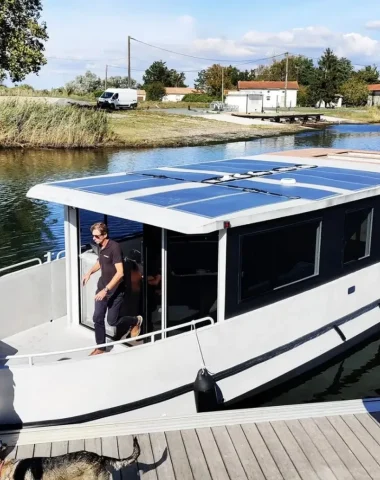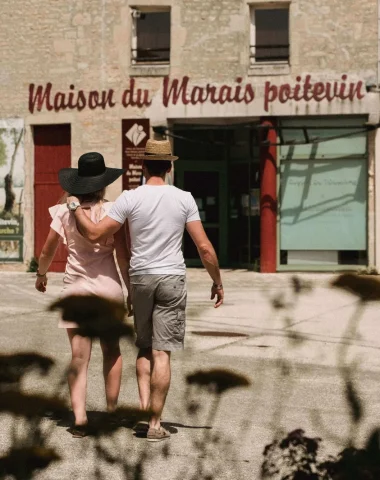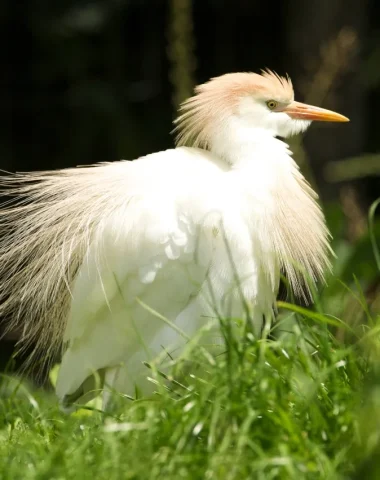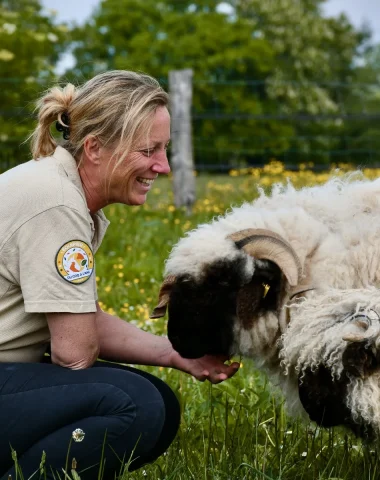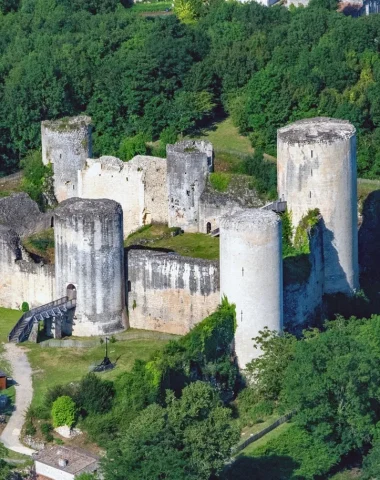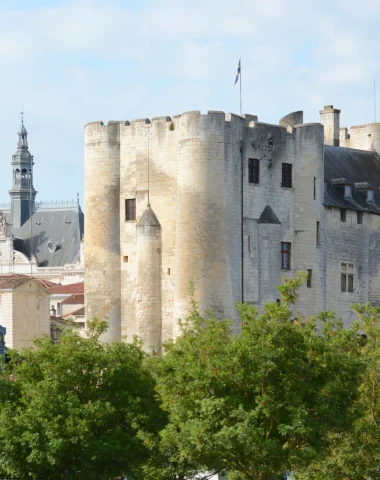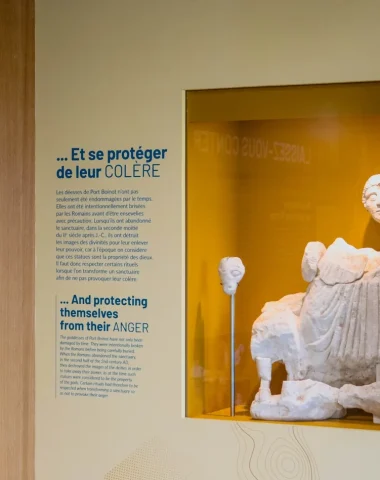Le musée Bernard d’Agesci de Niort, l’un des plus importants musées du Grand-Ouest. Il présente sur 6 300m2, 4 sections : Beaux-Arts, Musique (essentiellement autour du luthier Auguste Tolbecque) Histoire Naturelle et le conservatoire et observatoire de l’éducation. Ce musée accueille également l’un des rares ateliers nationaux de restauration de peintures !
L’histoire du Musée Bernard d’Agesci
Augustin Bernard alias Bernard d’Agesci né à Niort en 1756. Issu d’une famille bourgeoise, il est élève au Collège de l’Oratoire à Niort avant d’être envoyé à Paris pour étudier les grands maîtres. Il entre alors dans l’atelier de Jean-Bernard Restout à l’Académie Royale de Peinture et de Sculpture. Il trouve place dans ce Paris artistique comme en témoigne la présence de six de ses tableaux dans les collections du marquis Louis-Gabriel de Véri, qui est probablement à l’origine de son départ pour l’Italie où il séjourne de 1783 à 1789, à Bologne et à Rome. Il revient à Paris en 1789 au cœur du chaudron bouillonnant de la Révolution française. Au Salon de 1791 à Paris, an III de la liberté, il expose 9 tableaux sous le nom de Bernard Dagescy ou D’Agesci. En 1792, il prépare son entrée à l’Académie lorsque celle-ci est abolie. Les événements révolutionnaires l’obligent à quitter Paris et à s’installer à Niort. Vous souhaitez en savoir plus sur son histoire ? Consultez le dossier de presse en bas de la page.
La section Beaux-Arts et arts décoratifs
Ces collections du musée Bernard d’Agesci mettent en exergue l’évolution de la représentation des corps dans la peinture et la sculpture selon les contextes politiques et religieux et les découvertes médicales.
La section regroupe des peintures du XVIème au XXème siècle, surtout flamandes et hollandaises ; peu de peintres très connus, mais beaucoup de “petits maîtres” de haute qualité et “suiveurs” de talent, comme la “Vierge aux raisins” (Ecole flamande du XVIème siècle) ou le “Salomon et la Reine de Saba” de l’atelier de Frans II Francken dit “le jeune” (Anvers, 1581-Anvers, 1642), peintre flamand des Pays-Bas.
Dans le grand hall du musée Bernard d’Agesci, le visiteur est accueilli par “L’Apollon du Belvédère”, statue de bronze du XVIIème siècle attribuée au sculpteur Hubert Le Sueur ; une entrée en matière invitant à découvrir aussi les sculptures du XIXème siècle (Poisson, Baujault, Caillet…) ou bien encore la salle des bustes.
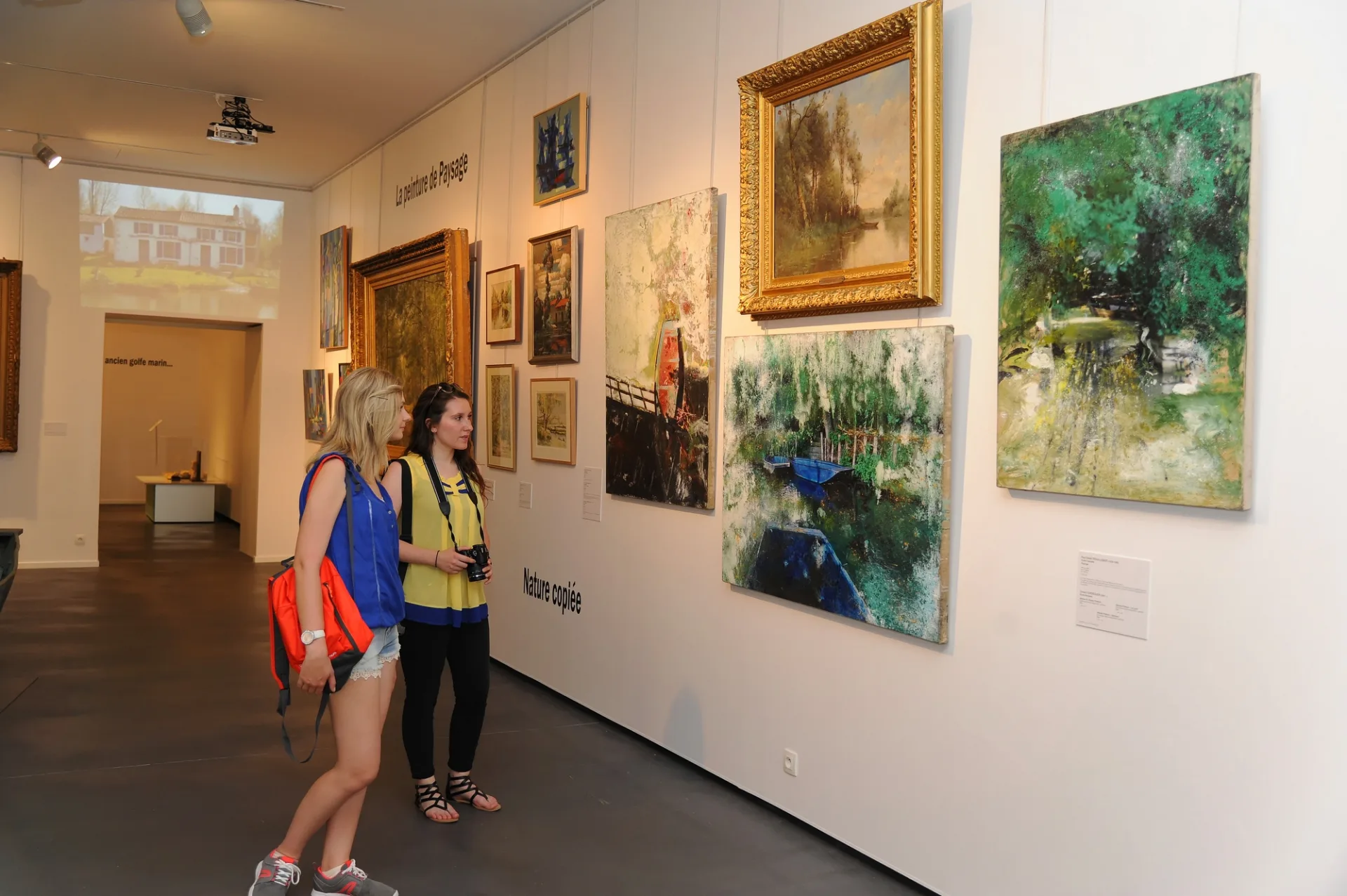
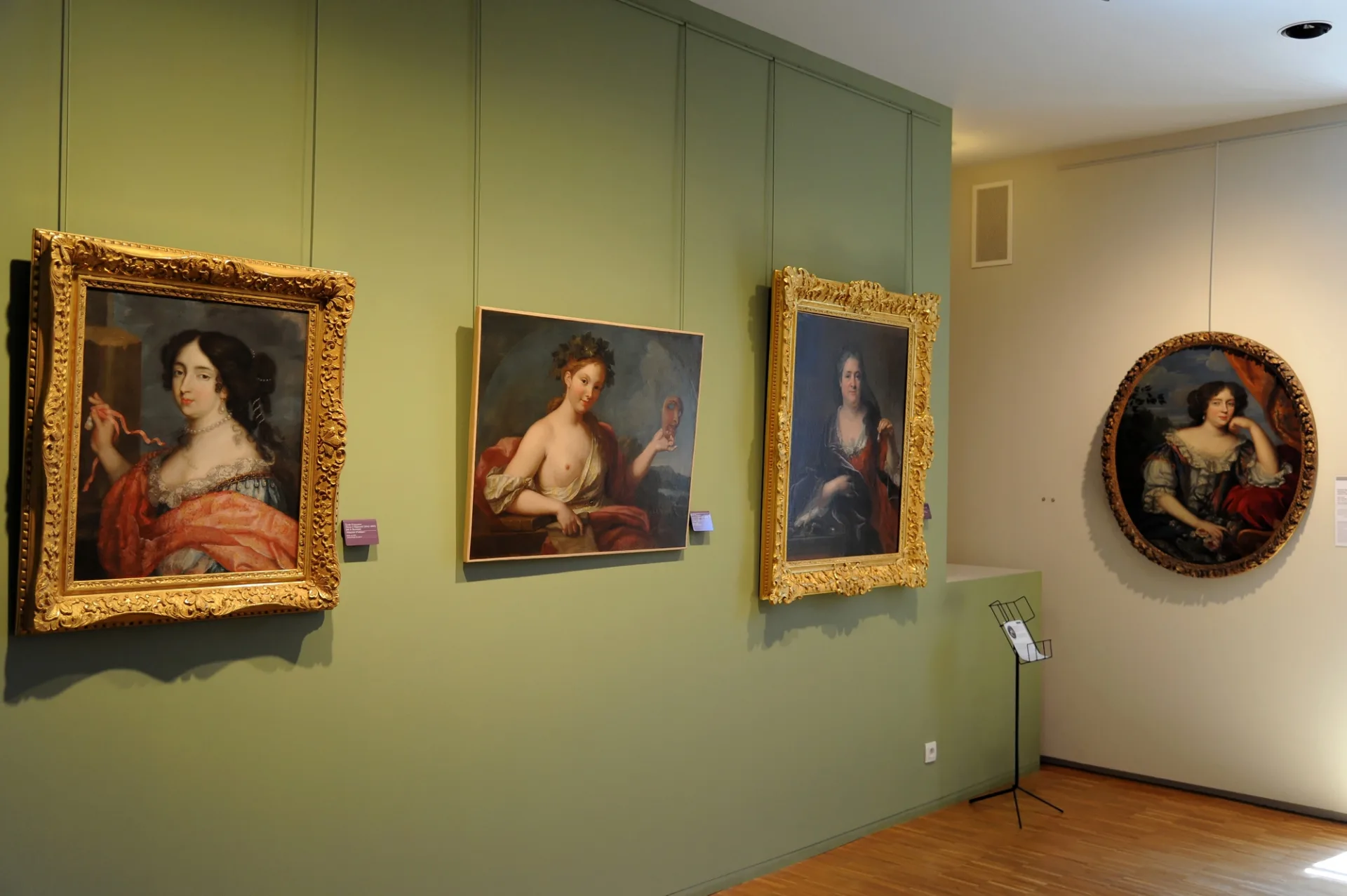
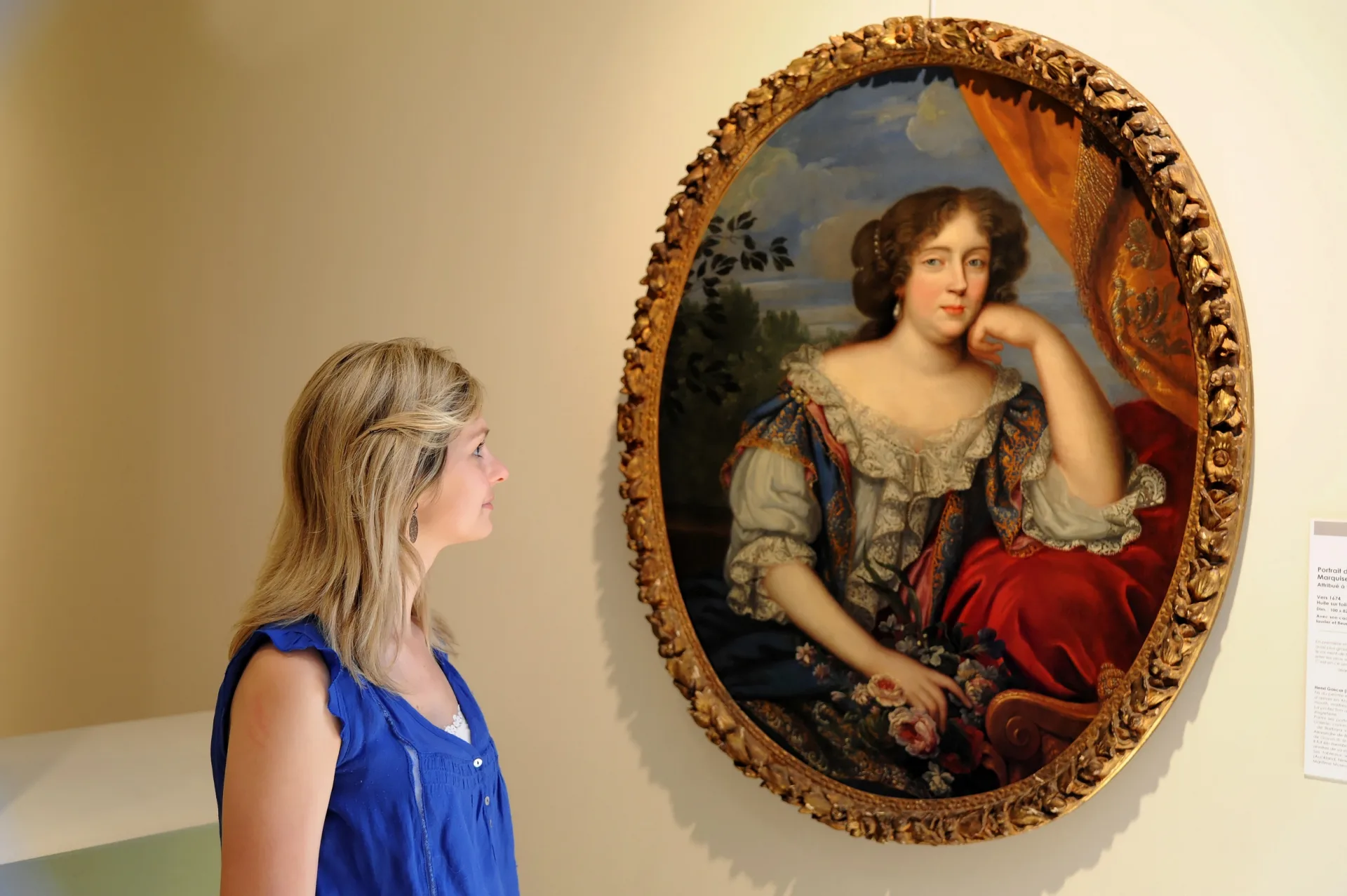
Quant aux arts décoratifs, le musée Bernard d’Agesci présente un fonds exceptionnel d’objets : plateau aux clercs provenant de Syrie (1230-50), plateau inscrit provenant d’Egypte ou de Syrie (1310-40), armure de bébé de Perse du XVIème siècle… ; la troisième collection de France d’objets islamiques mais aussi d’ivoires gothiques, d’émaux de Limoges de la Renaissance, d’orfèvrerie religieuse…
Sans oublier, les boiseries peintes de la première moitié du XVIIème siècle de la chapelle du château de La Mothe-Saint-Héray (Deux-Sèvres) et le plafond de 9 m2 en faïence de Parthenay (Deux-Sèvres) exposé dans la salle Auguste Tolbecque (musicien du XIXème-XXème siècle, niortais d’adoption, dont une partie de sa collection de lutherie est mise en valeur au musée Bernard d’Agesci).
La section Musique
Cette section est en particulier dédiée à la collection de lutherie d’Auguste Tolbecque, un musicien multi-instrumentiste du XIXème-XXème siècle qui s’est installé à Niort en 1856.
Le musée Bernard d’Agesci vous plonge, au travers de 2 salles, dans le salon de musique de l’artiste ainsi que dans son atelier de lutherie du Fort-Foucault (ancienne forteresse située sur un îlot face au Donjon de Niort).
Vous découvrirez, entre autres, des reconstitutions d’instruments du Moyen Âge, une basse de lyre à quinze cordes de 1898 ou encore un violoncelle. Ces instruments sont tous réalisés par Auguste Tolbecque.
La section Histoire Naturelle
L’espace “le jour et la nuit” du musée Bernard d’Agesci renferme des mammifères emblématiques comme le loup ou l’ours brun mais aussi des rapaces comme le hibou Moyen-Duc, pygargue à queue
blanche, aigle royal… Ces animaux se côtoient dans cette salle qui évoque leur comportement diurne ou nocturne.
Une importante collection d’ornithologie est constituée principalement des dons au musée Bernard d’Agesci de deux naturalistes et taxidermistes niortais : Ingrand, ancien directeur de collège à Civray, puis à Niort, et son disciple Marius Guimard, employé à la Ville au courrier, qui a conservé le dernier gypaète barbu (le plus grand vautour de la faune européenne) tué en France, dans les Pyrénées.
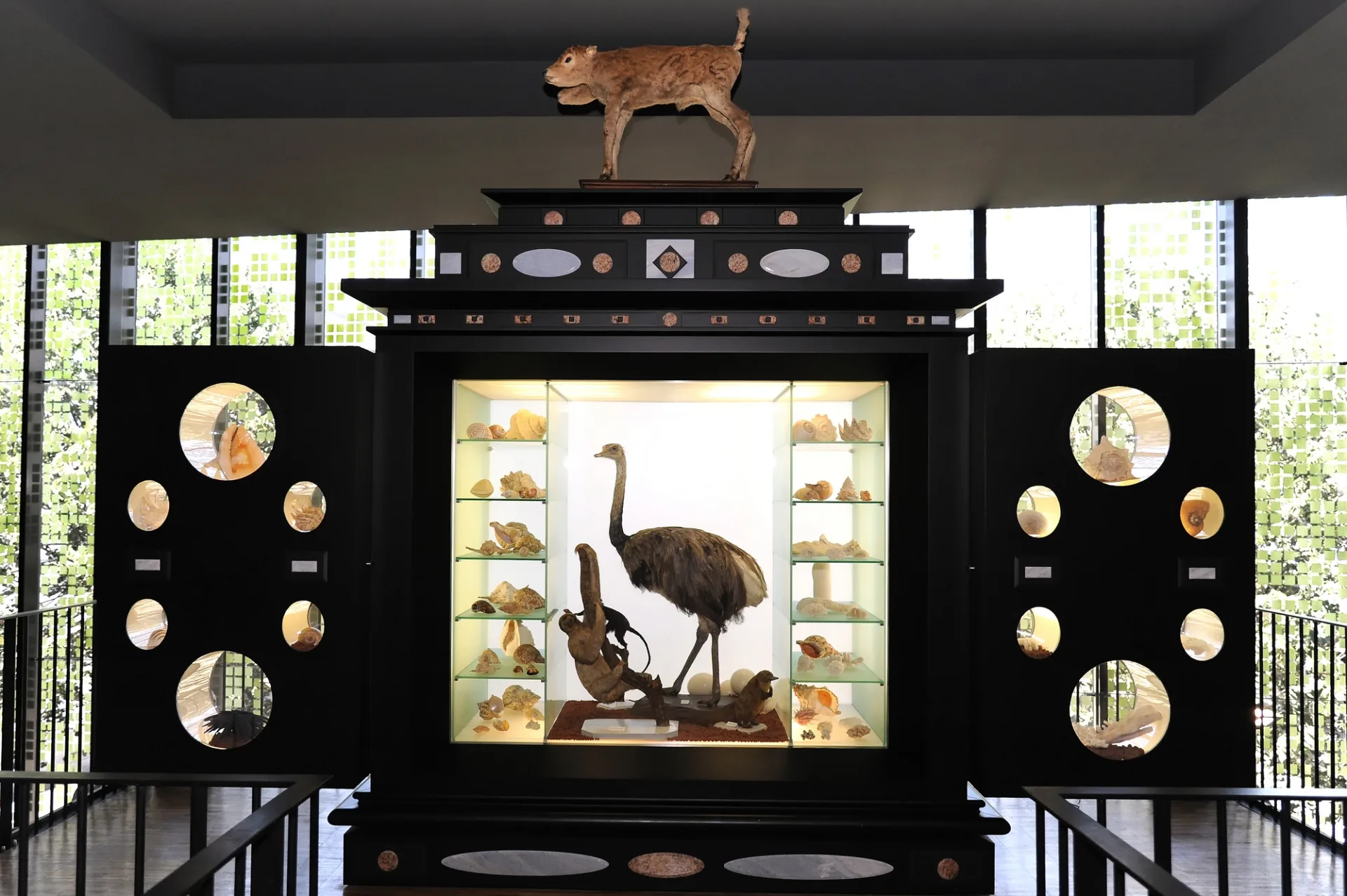
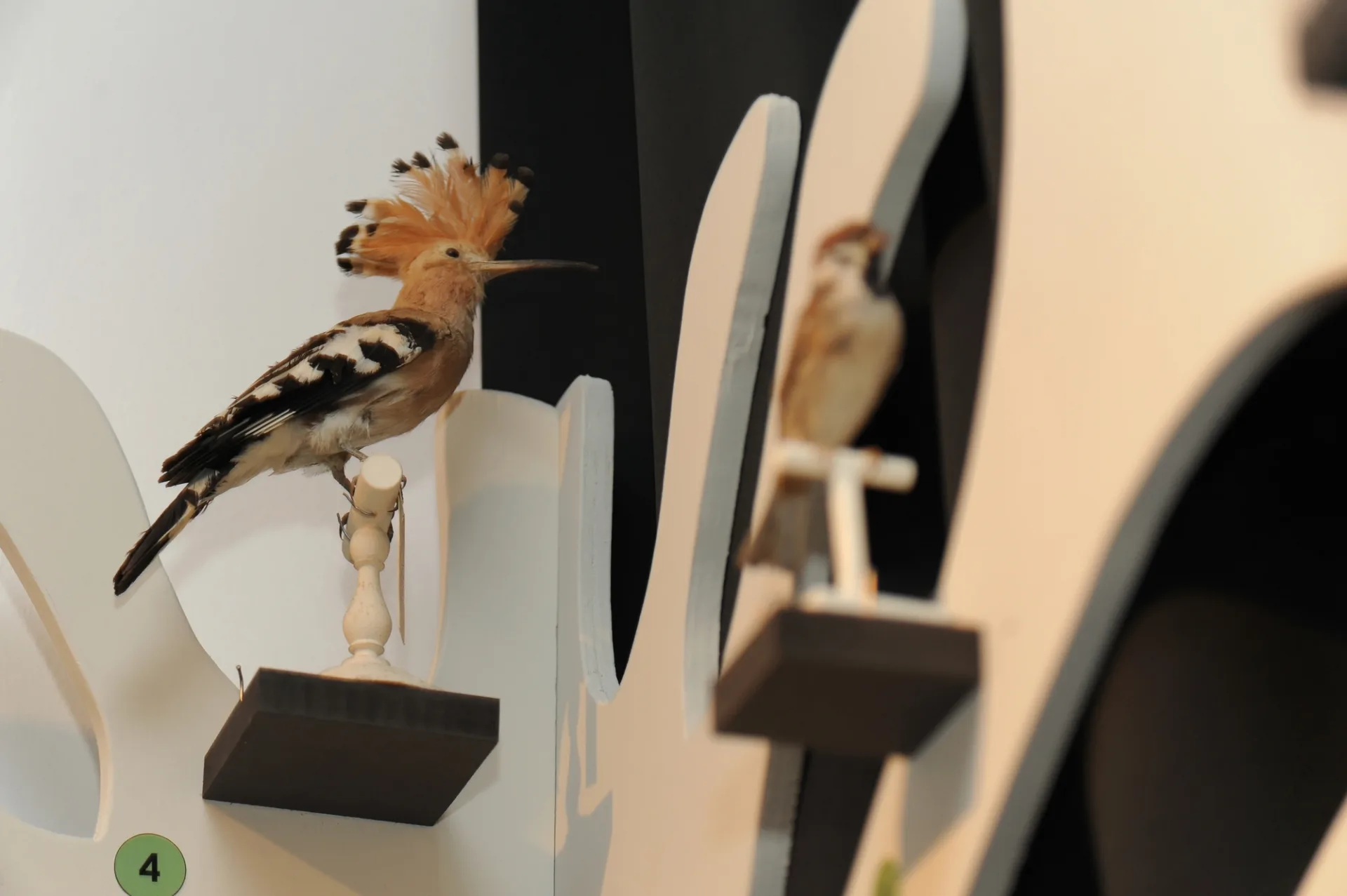
À voir aussi : un cabinet de curiosités regroupant des coraux, des coquillages, des œufs d’autruche ; une collection de fossiles d’ammonites et autres mollusques marins datant d’entre 183 et 155 millions d’années ; une collection ostéologique avec des squelettes de cerf, singe, aigle royal, chauve-souris, lion…
La section conservatoire de l’école, des méthodes pédagogiques et des objets scientifiques
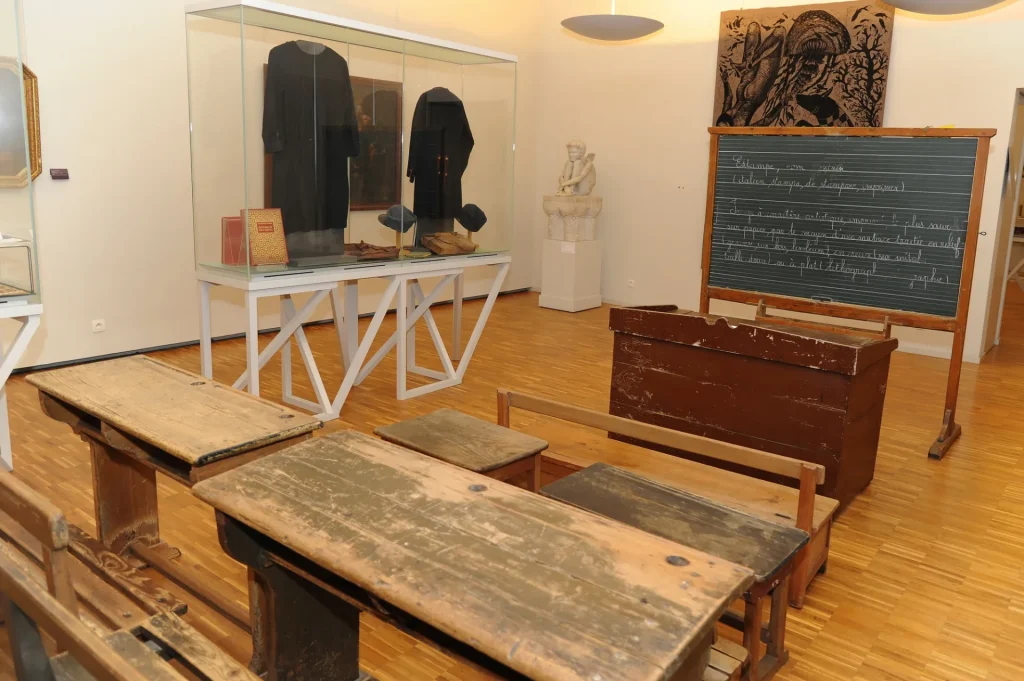
Cette section du musée Bernard d’Agesci présente l’histoire d’un siècle et demi d’enseignement : objets et mobilier scolaires (armoire-musée utilisée pour les leçons de choses), appareils scientifiques (praxinoscope, les prémices du cinéma), cartes murales, ouvrages de collèges et lycées.

